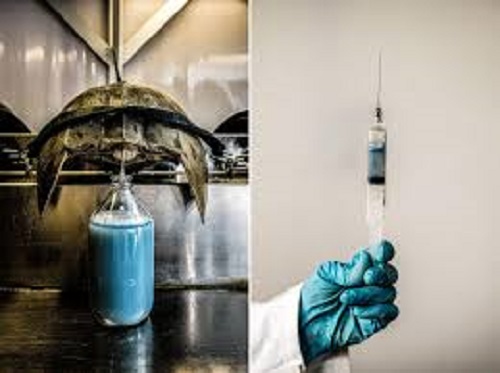Horseshoe Crab Blood
Why is Horseshoe Crab Blood Valuable to Humans?
Why is Horseshoe Crab Blood Valuable to Humans?
Horseshoe crabs are fascinating creatures that have roamed the Earth for millions of years, and their blood, known for its unique properties, plays an invaluable role in human health. At first glance, you may not think of horseshoe crabs as being directly tied to medical science, but these ancient animals provide a substance that is essential for ensuring the safety of countless medical products used every day. So, why is horseshoe crab blood so valuable to humans?
The Unique Properties of Horseshoe Crab Blood
The blood of a horseshoe crab is not like that of humans or other animals. It is a copper-based blood, which is blue in color, unlike the iron-based red blood that flows through our veins. This unique color comes from a copper molecule called hemocyanin, which is used for oxygen transport. While this in itself is intriguing, it’s not the blood’s color that makes it special; it’s a substance called Limulus Amebocyte Lysate (LAL) found in the blood that holds the real value.
LAL is a remarkable substance that is extremely sensitive to bacterial endotoxins. When exposed to these toxins, the blood clots, a reaction that forms the basis for a critical test known as the Limulus Amebocyte Lysate (LAL) assay. This test is used extensively in medical laboratories to ensure that products like vaccines, surgical instruments, and IV fluids are free of harmful bacterial contamination.
The Importance of LAL in Medical Testing
The discovery of LAL’s ability to detect bacterial endotoxins revolutionized the field of medical safety. Before the development of this assay, detecting endotoxins in medical equipment and pharmaceutical products was challenging and time-consuming. However, thanks to horseshoe crab blood, this process has become quick and reliable, saving countless lives in the process.
Endotoxins, which are released when bacteria break down, can cause severe reactions in humans, including fever, septic shock, and even death. Therefore, ensuring that medical products and equipment are free from these endotoxins is critical to patient safety. The LAL test provides a highly sensitive and effective method of identifying even the smallest traces of endotoxins, which is why horseshoe crab blood is considered so valuable in the world of healthcare.
How Horseshoe Crabs are Harvested for Their Blood
Given the crucial role that horseshoe crab blood plays in medical testing, it is understandably in high demand. Unfortunately, the process of harvesting the blood is invasive and stressful for the crabs. In many cases, horseshoe crabs are captured, their blood drawn, and then returned to the wild. However, this process can cause harm to the crabs, and there is concern that the overharvesting of horseshoe crabs may affect their population in the long run.
In response to these concerns, efforts are being made to develop synthetic alternatives to the LAL assay, which would reduce the need for horseshoe crabs. Additionally, some companies are working on methods to extract blood in a way that causes minimal harm to the animals, and there are ongoing discussions about how to strike a balance between medical necessity and animal welfare.
Conclusion
Horseshoe crab blood is undeniably valuable to humans due to its critical role in detecting bacterial endotoxins and ensuring the safety of medical products. While the process of harvesting this blood does come with ethical considerations, its importance to public health cannot be overstated. The unique properties of horseshoe crab blood have made it one of the most important substances in modern medicine, and ongoing research continues to highlight its irreplaceable value. As we look to the future, finding ways to safeguard both horseshoe crabs and human health will remain essential.

